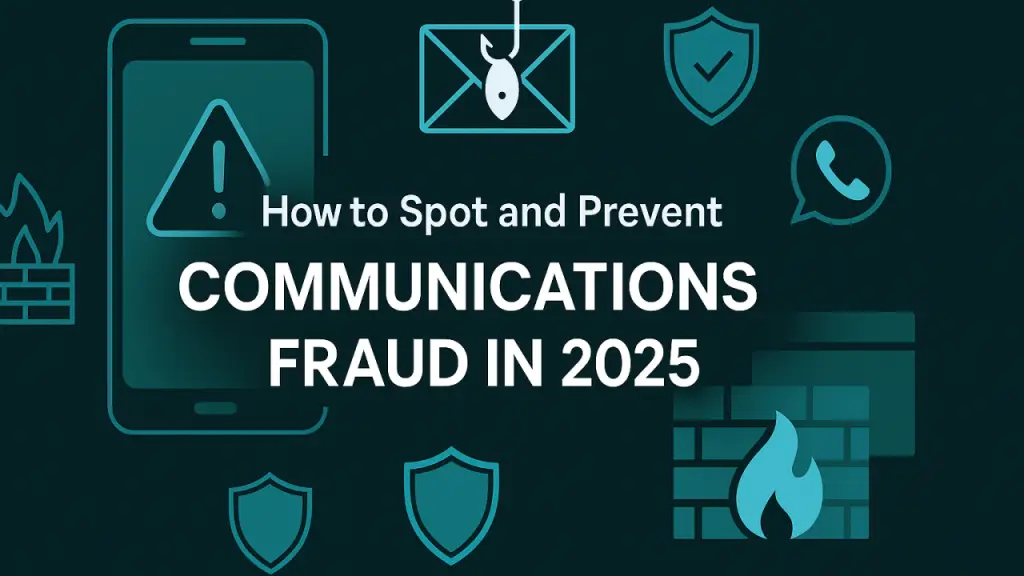
THE SECURITY DIGEST
Security News, Products, & Best Practices
Protect Yourself and Your Business from Modern Day Scammers
In today’s digital world, communications fraud is more advanced—and more dangerous—than ever. From phishing emails to phone spoofing and SIM swapping, scammers are constantly evolving their tactics to trick individuals and businesses into handing over sensitive data.
At DMG Security Co., we don’t just protect physical assets—we’re committed to helping our clients and the general public stay safe in the digital world, too. Here’s what you need to know to avoid becoming a victim of communications fraud in 2025.
What is Communications Fraud?
Communications fraud refers to deceptive practices that use phones, emails, text messages, or online platforms to gain unauthorized access to information or financial assets. These scams are designed to look and sound legitimate, but they’re anything but.
Top Types of Communications Fraud You Should Know
1. Phishing Emails and Texts – Fake messages that mimic real companies, asking you to click a link or “verify your account.”
2. Caller ID Spoofing – Scammers manipulate caller ID to display a trusted name or number.
3. SIM Swapping – Fraudsters convince mobile carriers to assign your number to their SIM card.
4. Business Email Compromise (BEC) – Criminals pose as company executives or vendors to trick employees into sending money or info.
5. Voicemail & Toll Fraud – Exploiting voicemail or phone systems to gain unauthorized access or rack up expensive calls.
Red Flags to Watch For:
• Emails or calls with a sense of urgency (e.g., “Act now!” or “Your account is compromised.”)
• Requests for personal, financial, or login information
• Suspicious links or attachments
• Calls from numbers that look familiar but seem suspicious
• Messages asking for “confidential” client or business data
How to Protect Yourself and Your Business
• Never Share Sensitive Info over the phone or email unless verified.
• Use Multi-Factor Authentication (MFA) on all important accounts.
• Verify Requests by calling the known contact directly—don’t trust links or callback numbers in suspicious messages.
• Train Your Team to recognize phishing, spoofing, and other social engineering tactics.
• Report Suspicious Activity to your IT or security team immediately.
Final Thoughts
Communications fraud in 2025 is more sophisticated than ever, fueled by advances in artificial intelligence, deepfake technology, and increasingly bold phishing and spoofing tactics. Our findings are clear: prevention requires vigilance, layered defenses, and an informed team.
Here’s what we recommend moving forward:
Stay Proactive and Adaptive Fraud tactics shift constantly. Regularly auditing your systems, updating policies, and following trusted security sources like Krebs on Security ensures your defenses stay current.
Invest in Awareness and Training Fraud prevention starts with people. Regular training sessions and realistic phishing simulations help employees recognize red flags before damage occurs. According to the Federal Trade Commission (FTC), phishing remains one of the most common and preventable forms of fraud.
Adopt a Layered Security Approach No single tool can stop every scam. Combine multi-factor authentication, endpoint protection, and anomaly detection to create a defense system that adapts to evolving threats. The Cybersecurity & Infrastructure Security Agency (CISA) stresses that layered defenses significantly reduce exposure to fraud.
Verify Before You Trust Always double-check unexpected requests for money transfers, credentials, or sensitive data. Caller ID spoofing is a growing threat, and the Federal Communications Commission (FCC) provides clear guidance on how to protect your business from these scams.
Have a Response Plan in Place Even with the best defenses, fraud attempts can slip through. A rapid response plan—including who to notify, how to contain damage, and steps for recovery can make all the difference.
Communications fraud isn’t slowing down, it’s evolving. By prioritizing training, using layered protections, and staying informed through trusted resources, businesses can minimize risk and maintain trust with their clients and communities.
DMG Security & Company remains committed to helping our clients stay secure in this fast changing landscape. Protection for all isn’t just a tagline, it’s our mission.
For any questions/concerns, or to schedule your complimentary analysis please contact us. If this is an emergency and you are in need of immediate help please call 911 or the appropriate law enforcement agency.
Explore the Security Digest today and strengthen your knowledge, your safety, and your peace of mind.
The Security Digest – 04/11/25
